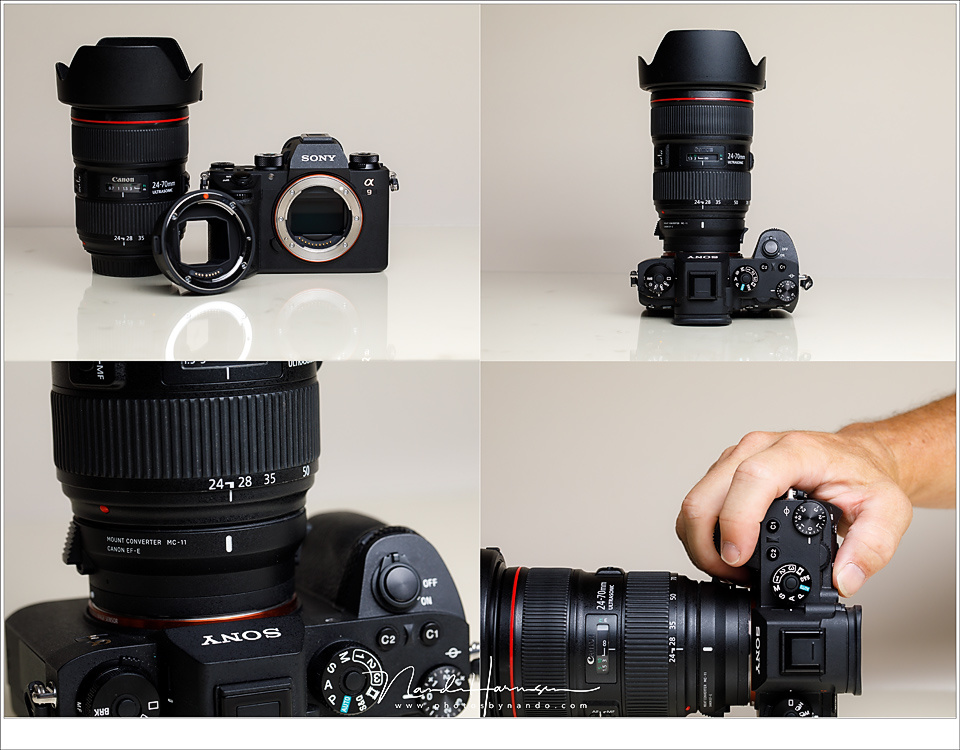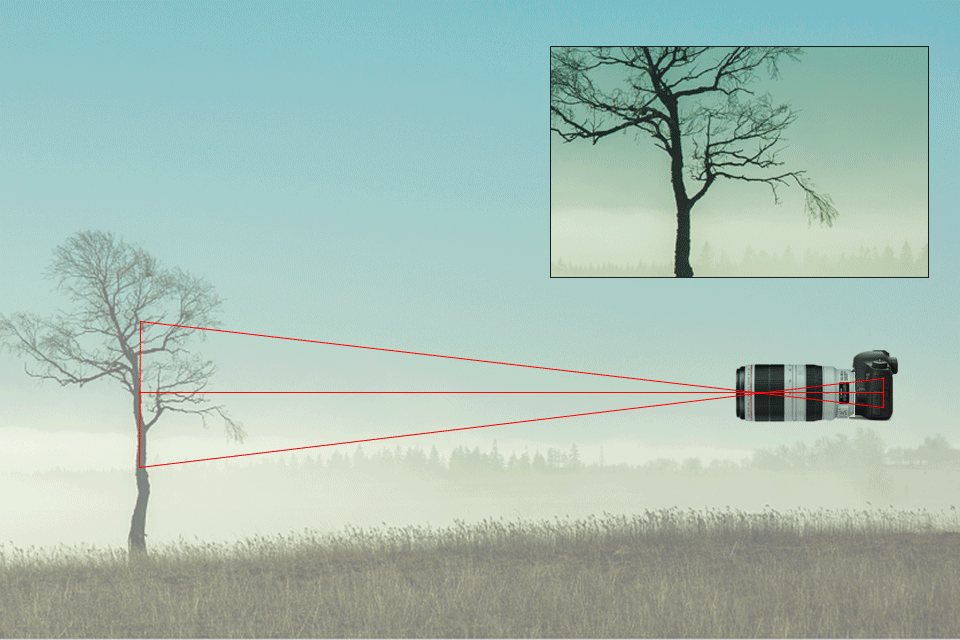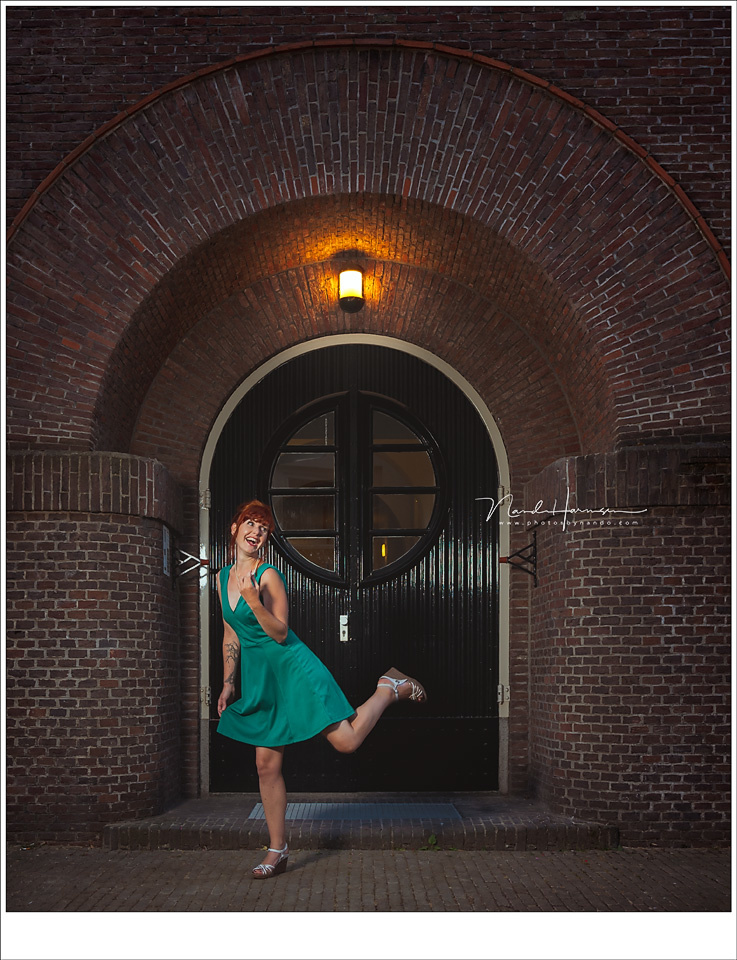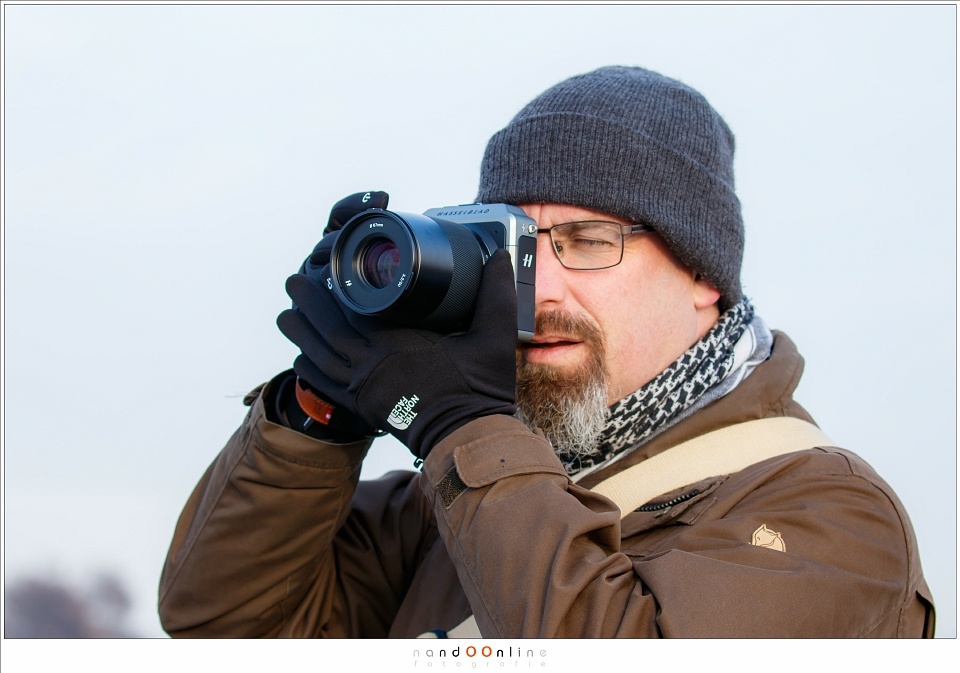When it is time to buy a camera, image stabilization can be something that is on the bucket list of must haves. Image stabilization makes it possible to shoot with longer shutter times than normal, preventing the use of a tripod. There are many different implementations of image stabilization, but it is not the Holy Grail. You could say image stabilization is overrated.
The claim about image stabilization being overrated may sound like click-bait, but it is not. The discussion about the lack of in body camera image stabilization in the Canon EOS R shows how many are fixed on this helping aid. With all the fuss about it, you could even get the idea that sharp images are not possible anymore without it. And yes, it is a tool that can minimize the risk of unshapen images due to vibration or hand shake, but it is not the answer to everything.

Large telephoto lenses often have image stabilization build in. You can choose from different settings, that fit the kind of photography you want.

In Body Image Stabilization (IBIS) often works with any lens you use. Even if it is a lens from another manufacturer, like this Canon EF24-70mm f/2,8L II on the Sony A9.
First of all, let me explain why image stabilization, or vibration reduction, is so wonderful. If you already are familiar with it, just skip this part.
Nobody can hold a camera perfectly still. We make tiny movements all the time. Often we are unaware of this. Breathing, our heartbeat, even the movement of our muscles, and our balance to stand on two legs, all these things make us constantly move a tiny bit. And if we use a shutter time that is long enough, these movements become visible because it is also moving the camera. Unless you use a tripod, of course. But we are not talking about that.

Even in a stable position there is a slight movement from your muscles and respiration, even a heart beat will move your hands. But when the shutter speed is fast enough, it won't be visible in the picture (image by Hetwie (www.hetwie.nl))
Once there was a golden rule about holding a camera perfectly still. It was based on the focal length and a 35mm film, what we call full frame today. It was said that the minimum shutter speed that still makes it possible to hold the camera still, was 1 divided by the focal length of the lens. If you used a 50mm focal length, you could shoot a sharp image with a minimum of 1/50 sec. With 24mm it could be 1/24 sec. If you used a tele lens like 800mm, the minimum shutter time would be 1/800 sec – if you are strong enough to hold that kind of lens. It is just a guideline, because some people could go beyond that 1/[focal length] rule.

If the shutter speed is fast enough, it should be able to take sharp hand held pictures. But holding a Canon EF800mm f/5,6L IS like this is foolish... it is way too heavy. Luckily the lens has image stabilization.
Today we have sensors instead of film, but the guideline still works the same. One divided by the focal length gives a good idea up to what shutter time you can use the camera with no risk of shaking. But it also depends of the sort of sensor you use. The guideline is based on a full frame sensor, so if you use a smaller sensor the movement will be enlarged with the same factor as the crop factor. When you use a 50mm lens on a full frame camera, you should be able to shoot with 1/50 sec. But when the 50mm lens is placed on a 1.5 crop camera, the registered image has a larger magnification, so it is acting like it was a 75mm on a full frame. The minimum shutter times should be 1/75 sec.

The rule 1/[focal length] still works as a guideline. This animated gif shows the exaggerated movement of a 50mm focal length. This movement won't be visible in the picture when shot with a shutter time of 1/50 second.

This animated gif shows the same exaggerated movement, but with a 200mm focal length. Compare the movement with the previous gif. Due to the longer focal length the movement is enlarged, so a faster shutter speed is necessary. In this case 1/200 second will do.
Now comes image stabilization into the picture. The modern systems that manufacturers build into their cameras are so sophisticated that they can reduce vibrations up to 4 stops, or even more. If you have an image stabilization that can works up to 4 stops, you should be able to make the shutter time 4 stops longer than the guideline 1/[focal length] tells us. With 50mm focal length on full frame, we should be able to shoot handheld not with just 1/50 sec, but up to 1/4 sec.
That is amazing of course. So you can leave your tripod at home, or just don’t buy one. Especially when your camera has In Body Image Stabilization (IBIS), it will work with any lens you use. Shooting with 16mm means you can get sharp images hand held, with a shutter time up to 1 second (!) if the IBIS works up to 4 stops.
But it won’t stop any movement of the subject.

A fast stutter speed is necessary when freezing movement, even when image stabilization could compensate movement up to 3 or 4 stops. (Leica SL 28mm | ISO400 | f/4 | 1/80 | Profoto B2 flash in OCF 2" softbox)
And this is something many seem to forget. You may use your camera hand held for 1/4 sec with 50mm, but it won’t stop your object from moving. I always think of my wedding photography, and the Canon EF 85mm f/1.4L IS, which has image stabilization. It may compensate for my shaky hands, but it won’t compensate the movements of the wedding couple. So I still need a fast shutter speed to end up with images that are sharp.

Although image stabilization prevents motion blur from the camera, it won't freeze the movement of the bride and groom. (Canon EOS 5D mark III 67mm | ISO400 | f/8 | 1/25sec)

During these moments you cannot rely on image stabilization. You need to keep your shutter speed high enough to prevent any motion blur from the subjects. You don't need image stabilization for these kind of photos (Canon EOS 5D mark IV 57mm | ISO3200 | f/5,6 | 1/200 | Profoto A1 TTL flash)
Of course this is all based on 35mm film. Today’s sensors have a much larger resolution than film in the older days. For example, if you use a 16mp camera the guideline may work, but with a 50mp sensor (like the (semi) medium format cameras from Fujifilm and Hasselblad) it probably won’t be enough. With a much higher resolution the tiniest of movements become visible so any image stabilization will certainly come in handy. Not for freezing the movement of the subject, but to reduce any shake or vibrations from the photographer.

These cameras have so many pixels, that the tiniest movement will be visible. Unfortunately this Hasselblad X1D-50c doesn't have any image stabilization. You have to take that in account when using it without tripod. (image by Hetwie (www.hetwie.nl))
So, this epistle is not against image stabilization at all. I love the technique and how it enables the photographer to shoot with a reduced risk of camera shake. The In Body Image Stabilization is wonderful and I think it should be built into every new camera that comes to the market. Just be aware that image stabilization it is not always necessary, like photographers that mainly shoot from tripod. More important is to realize it won’t stop the movements of your subject.
Please let me know in the comment how important image stabilization is for you and if you would consider buying a camera without it.







People want stabilization for video these days, thats why it is "needed".
Tell me if i'm wrong, but I don't recall people "needing" stabilization for still photography unless it was 10 years ago.
You're not suggesting that because people didn't need something 10 years ago, that they don't need it now are you?
No, i'm just saying for still photography these days it's more of a "nice to have", if anything we need it less today because of ISO improvements. The reason people are up in arms recently is because of video needing stabilization.
I get shots handheld that I never could have without it. So if getting a shot or missing it makes something "Needed" or "Nice to have" is up to the individual.
In that case you don't have moving object in your frame.
For handheld video it is useful... true. But I am talking about photography in this article
I have a brain tumor, and because of it, I have tremors, so image stabilization is crucial for me. Recently I rented the Nikon 200-500 f/5.6 for a trip to Costa Rica. I kept my exposure at 1/250, f/5.6, auto ISO for almost everything and it was an image saver to have that built in VR. I was able to get a ton of crisp images because of it. I was stunned when I shot the same image on vs. off. I can't buy a lens now without it.
I agree. I had a stroke at 54. The intolerance is breathtaking.
That is a perfect reason to go for image stabilization. I am glad you can enjoy photography with this aid
Auto Focus is over rated too.
So is keeping both eyes open when you look though the viewfinder.
hahahahahahahaha. This made my day
Of course. So is a expensive camera when you have your cell phone at hand :)
While the article is useful information presented in a nice way, how does this make IBIS overrated? When stabilization is useful (no movement in front of the camera) isn't more stabilization better? I know this was debated for a long time but I think it's increasingly clear that IBIS is useful to have and lens IS + IBIS is a better combo than either of them alone. All the cameras that have it use both movements in concert when an IS lens is used.
In regards to whether I prioritize it, yeah but I shoot a lot of static subjects. But there's only one flagship mirrorless that doesn't have it right now so you almost have to be actively avoiding it to not use IBIS. Unless you shoot DSLR but people that prefer DSLRs probably aren't buying them just to avoid having IBIS.
There are people who shoot with DSLRs that use IBIS. Just because CANIKON don't have IBIS in their DSLRs doesn't mean the other manufacturers don't. Pentax and Sony have had the tech in their systems even before the mirrorless revolution so don't think that IBIS is here because of it.
I am talking about image stabilization in general; IBIS is just one of the techniques
Important but Overrated for Some.
However ..
Nando please address the following in answer and better yet in a new article ...
How much vibration is induced by DSLR mirror itself and how well does in camera or optic vibration isolation compensate.
If you ever have used a Bronica you may have experienced the worst case.
I have relied on Auto ISO in dark spaces and Canon Vibration Isolation a lot. This shot is handheld at 1/25 f22 ISO 12800 20 -105L IS at 22mm
I have some shakes at age 64 ..
But Micheal J Fox will need it more than me.
I could write about vibrations by a mirror in DSLR cameras. Perhaps it is a good idea. Thanks for the suggestion.
I never shot with Bronica unfortunately, although I had those camera in my hand many times when I worked in a camera store during the nineties. But I doubt if image stabilization would compensate for that kind of vibrations.
Exactly my point .. the Bronica might just be the worst. But how to DSLR’s Compare with each other ??? They put the mirror lock up there for a reason.
I m not ruining out to buy mirrorless in near future but my thought was hmmmm ... no mirror vibration.
I have an easy sollution. Mirror lockup is one, but if you use live view, the mirror is also "up". So no vibration due to the mirror when shooting in live view.
As a matter of fact... when using live view you transform your dslr into a mirrorless camera
lol
I would not consider buying a camera without IBIS today. There is every reason to have it and no reason not to have it. No, it will not stop subject movement, but I don't believe that anyone is suggesting that it does. It will, however, reduce the size and weight of lenses by putting the technology inside the body rather than on the lenses themselves. It will also reduce the overall cost of a system since you pay for it once rather than over and over again with each lens that you purchase. It can be calibrated to provide stabilization for lenses that otherwise would not have it such as vintage lenses. It is also incredibly useful for video, which is becoming a larger part of the photographer's workload (whether you agree with this trend or not, it's an undeniable reality).
Sure, we've gotten along just fine without stabilization for decades, but now that the technology is here, there's really no reason not to have it at this point.
Also, in my case, I have pretty unsteady hands so IBIS lets me shoot at the reciprocal shutter speed rather than twice as fast to account for my hand shake. This becomes even more important with high resolution cameras where hand shake is much more noticeable.
I too find the technology wonderful, but the message is, that it is not the holy grail. Sometimes I get that feeling when I read again about a new camera that is not equipped with it.
About the weight and size of lenses with or without IS; I have experience with the Sony cameras with IBIS, but the big white 70-200 and 100-400 lenses aren't lighter or smaller due to that. They still weigh as much as the Canon or Nikon versions with image stabilization.
Stabilization can mean the difference between getting the shot or missing it. As such I would not call it overrated.
Well, did you read the article? Image stabilization can still ruin your shot if the subject is moving. No matter how many stops you can win.
I turned it off completely and haven’t cared to turn it on ever. It’s never helped me but “overrated” is a weird term
I find it strange you never use it. I guess you always use a tripod?
No, I just don’t use it. Even handheld yesterday using the A7riii with the Sigma 105 Art I didn’t use it. If your shutter speed is high enough and you’re using good practices, as we all should, you won’t see shake.
It’s different for everyone of course but I don’t care to use it.
I use the EF 85mm f/1,4 IS for my wedding photography, and although my shutter speeds are kept high enougn to eliminate movement from my subject, I do use the image stabilization function. It won't harm the image so I don't see the need to turn it off.
Well, it is important to get the result you want. That is important, and not the IS or VR or IBIS. And that is exactly why I wrote this article.
Thanks for sharing, Eric. :)
I do headshot and events in low light on gfx without image stabilization and the shots are okay.
There are definitely some use cases (shaky hand, evening wildlife for an example), but it's not a must for most.
Actually IBIS does not work well with any focal length lens and saying so in an article that mentions an 800mm, is misleading somewhat. Sure Canon's super-tele lens has IS built in, but some Nikon super-tele lenses do not have VR as that came a little later on for them. Not that really matters with my point, which is that IBIS does not really work with super-tele lenses.
It is? That is new for me.
Can you explain why?
This is the dumbest article I have read since the days of rec.photo on usenet. I guess you think seatbelts are overrated, too.
Also note that IBIS can be counter productive in certain situations, like when the camera is physically stabilized (ex. tripod mounted), so it needs to be turned off. However, for the most part, I would much rather have it than not since not all my lenses are stabilized and those lenses without stabilization built in tend to be lighter.
I've seen this mentioned before. Can you explain why?
I was doing some astro shots the other day, tripod of course. I spose this means I should've turned it off.
When image stabilization kicks in when shooting from a tripod, it will try to compensate something that isn't there.
Most modern systems can detect shooting from a tripod, thus switching it off. But if you touch the camera, it may think it is moving
I guess it depends on the camera brand; Nikon recommends to turn it off on tripod. When I used the Sigma Art 24-105 with my D610, the results were unusable when shot from a tripod with VC on. Some lenses were not as bad such as the 70-200, but still noticeable softness.
I always advice my workshop participants to turn off IS / VR / IBIS when shooting from tripod. Just in case.
Mmmm, okay so I thought as MythBusters would say, put it to the test. So I did 2 images, identical exposures: f/8; 8 sec at 384 mm, tripod mounted. One with, one without IS. With the obligatory pixel peek.
Of course I'm only doing this with a single camera lens combination - Canon 7D Mk 1; 70-200mm f/4 with 2x doubler. Maybe someone would like to repeat this with a different setup.
Did you use mirror lockup, or with live view turned on? Did you use a remote control, or self timer? Did you test this under windy conditions? What kind of tripod and ballhead (or other mounting) did you use?
With other words... the conditions are very important.
Okay. Mirror lockup: no; Remote: yes; Manfrotto tripod, no ballhead.
Indoors, that would be a fairly stable setup and I'm not seeing evidence of camera shake.
That is the point. When you try this at a place with lots of winds, or perhaps when you are shooting with your tripod in water, the vibrations by wind or water could activate the IS (or VR, or IBIS). And not everyone uses a very sturdy tripod. :)
A Sony 70-200 or 100-400 aren't any lighter than the Canon and Nikon versions.
True for In-LENS stabilization, but not for in-body, or IBIS. There is NO recommendation from Pentax, Olympus, nor Sony to turn off IBIS when mounted on a tripod, but pretty much all lenses instruct the disabling of VR/VC/IS/OS when on a tripod.
When one's camera is steady, IBIS makes no attempt to steady the camera.
Still, if it is not necessary, why take the risk
Had a night photography workshop participant yesterday with a Sony... the results with IBIS turned off were sharper.
I use the 70-200 mainly for sports photography with SS > 1/1000. The stabilization in the lens is only extra weight for me.
Still you can benefit from IS even with those shutter times. But I understand the reason
Tripods are becoming crutches for handicapped cameras of the future.
That says it all.
> The claim about image stabilization being overrated may sound like click-bait, but it is not.
Yeah, except it totally is.
And it worked ;)
Wow, you must be proud.